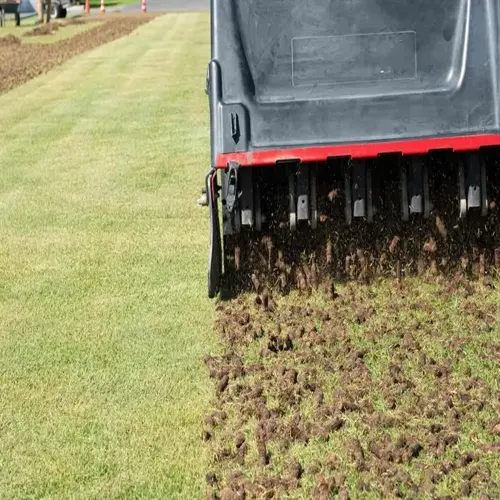How does mulch depth change with seasons?

Written by
Benjamin Miller
Reviewed by
Prof. Samuel Fitzgerald, Ph.D.Adjusting mulch depths to suit the season helps protect fruit trees from temperature extremes. It ensures that growth cycles align with conservation needs. Thinner spring layers allow nutrient release, which benefits new growth. Thick winter applications ensure roots are insulated against frost damage. Adjusting also prevents waterlogging during wet weather while controlling moisture during drought. The health of your orchard responds directly to varying depths that are suitable for each season.
Spring Transition
- Reduce depth to 2 inches after last frost
- Rake existing mulch to aerate
- Add compost for nutrient boost
Summer Maintenance
- Measure monthly with ruler
- Add material when below 3 inches
- Fluff compacted areas after rains
Winter Preparation
- Apply extra layer before first frost
- Extend coverage beyond drip line
- Slope away from trunks
With rising temperatures, implement reduction of spring depth in 2-3 in layers to allow for effective warming of soils and nutrient uptake. This will facilitate blooms and set cycles. With Mediterranean climates, slightly deeper layers will be maintained to protect from early heat. Your trees will send forth energy effectively into new growth.
Heighten *depth* of summer time to ward off evaporation, especially in desert localities. With a desert-type climate 4'. Check the moisture weekly. Fluff mulch after monsoon rains to prevent matting or clogging of water absorption into the soil. All these things conserve moisture during heat stress periods when it is most needed.
Before frost threatens, add the protection of autumn dressing. These can reach up to 5 inches in thickness in colder regions, where all the protection is afforded to the rooting zone. In more rainy climates, reduce the dressing to 4 inches to prevent waterlogged ground. Still, this period of dressing exterminates the frost without allowing a waterlogged ground. This dressing should be applied when the frost is practically finished.
Maintain a maximum winter depth during freezing months, compacting snow areas to 6 inches to trap insulating air pockets. Avoid new applications during freeze-thaw cycles. Check for rodent tunnels every month. Your trees will winter undamaged with proper depth management.
Using simple tools, measure depth changes. Use a ruler each month for different spots submerged at multiple depths. Write down how different materials decompose. Adjustments should be made according to rainfall patterns and temperature variations. As long as you pay attention, it will be perfect depth every day of the year.
Read the full article: Mulching Fruit Trees: Ultimate Guide

